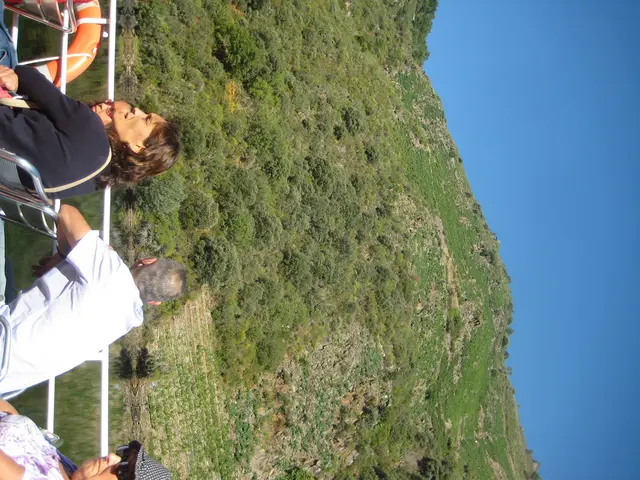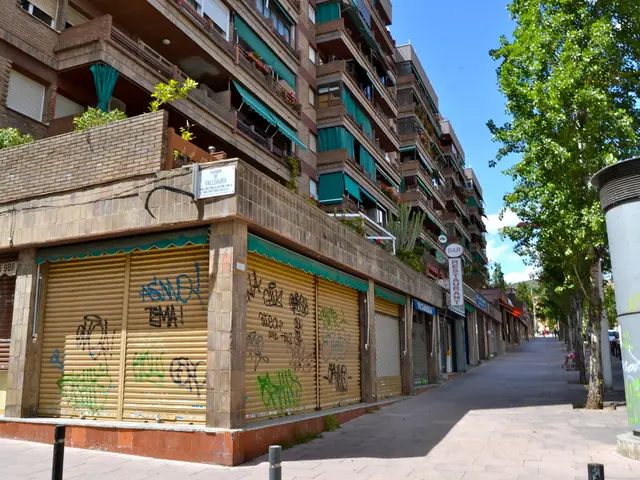Uncovering Hidden Gems: Delving into the Obscure Medieval Fortresses of the Baltic Nations
Forget the cliché, crowded castles. Instead, discover the hidden gems of the Baltic region, where moss-covered towers and neglected ruins await exploration. These off-the-beaten-path destinations are not only peaceful but also help preserve priceless medieval architecture. And when you unlock the doors to these historic sites, you support small local economies.
Venturing off the typical tourist trail can be a adventure, offering a sense of inspiration unlike any over-photographed location. These secluded castles lure visitors with fewer crowds and raw edges, creating a more genuine experience. Creatives will find a kindred spirit in these unexpected locations, great for storytelling and visual art that truly stands out. With the power of the internet and AI tools at our fingertips, it's easier than ever to share your Baltic castle experiences and bring awareness to these overlooked treasures (https://ahelp.com). By doing so, you can help safeguard their survival and captivate curious minds in the process.
Viļaka Castle – LatviaThis medieval castle, dating back to the 16th century, sits on an island in Viļaka Lake.In the 13th century, the modest island served as a haven for Cistercian monks, who built a monastery named Marienhausen. Later, the Archbishopric of Riga constructed the stone fortress to help guard the region. Today, visitors can access the island via a pontoon bridge and marvel at the remnants of the medieval architecture, standing silent witnesses to the region's rich history.
Traveler tip: The 400-meter long trail encircling the island offers a leisurely stroll amidst nature, making it a perfect outing for older travelers or those seeking a peaceful experience.
Ungru Castle Ruins – EstoniaSituated near Haapsalu, these neo-baroque ruins ooze a unique eerie charm. Count Ewald von Ungern-Sternberg began construction on the castle in the late 19th century, intending for it to mirror Merseburg Castle in Germany. However, the ambitious project was left unfinished after von Ungern-Sternberg's death, leaving behind an incomplete structure ravaged by pillaging and time. Photographers and architecture enthusiasts today applaud the ivy-clad, ghostly charm Ungru Castle Ruins embody.
Traveler tip: Combine your exploration of the ruin with a visit to the charming coastal town of Haapsalu for a captivating seaside experience.
Klaipėda Castle – LithuaniaAlso known as Memel Castle, this castle, built by the Teutonic Knights in the 13th century, has seen numerous battles and reconstructions throughout history. Despite the loss of much of the original structure, archaeological efforts have uncovered valuable sections. The on-site museum provides insights into the castle's storied past. The castle's northern curtain wall now houses the archeological exposition “Kurtina,” which boasts approximately 5,000 artifacts and the latest technology to share the history of Klaipeda.
Traveler tip: After exploring the castle, take a leisurely stroll along the waterfront to enjoy the blend of history and modern seaside atmosphere.
Raudonė Castle – LithuaniaTucked away along the Nemunas River, Raudonė Castle carries a mysterious allure. Originally built on a medieval Teutonic fortress site, the current castle dates back to the 16th century. Despite rebuilds with Renaissance flair, the thick walls and solitary tower still whisper of their defensive past. Visitors can climb the castle's main tower to enjoy panoramic views of the surrounding forest and riverbanks.
Traveler tip: The nearby massive and ancient Gediminas Oak presents a wonderful photo opportunity following your castle visit.
Kiiu Castle – EstoniaThe diminutive but enchanting Kiiu Castle is one of Europe's smallest medieval fortresses. Built in the early 16th century as a defensive residence, this tower house features four carefully designed floors with a restored wooden balcony used for defense on the upper level, an oddity among surviving Baltic fortifications.
Traveler tip: Kiiu Castle is easily accessible for visitors with less energy or mobility issues, and a small shop inside the castle sells souvenirs, craft beers, and coffee, making for a relaxing afternoon outing.
Limbaži Medieval Castle Ruins – LatviaFor those drawn to forsaken but richly storied places, the Limbaži Medieval Castle Ruins are essential to visit. Situated in the small Latvian town of Limbaži, these remains offer a true glimpse into the past, without the crowds or long lines.
The original stone fortress was erected by the Bishopric of Riga in the 13th century and played a crucial defensive role for centuries before meeting disaster during regional conflicts, such as the Livonian War. Today, travelers can explore the partially preserved and gently maintained stone walls, connecting with the raw texture of medieval architecture. A small open-air exhibit provides historical details, while the surrounding park provides a tranquil setting for reflection or a leisurely walk.
Traveler tip: If you happen to visit during summer, keep an eye out for local festivals or cultural events. The castle park sometimes hosts medieval-themed days or concerts, bringing the ruins back to life, if only briefly.
Hidden gems like these promise quiet charm, authentic inspiration, and the opportunity to leave a lasting impact on the local communities. So why settle for the same old crowded castles when the Baltic region offers so much more? Break free from the herd and let these mysterious destinations fuel your creative fires while ensuring their preservation for future generations to discover.
- The moss-covered towers and neglected ruins at Vilulka Castle, nestled on an island in Latvia's Vilulka Lake, offer a more genuine and peaceful experience for creatives seeking inspiration.
- Ungru Castle Ruins in Estonia, with their eerie charm and ivy-clad appearance, are a paradise for photographers and architecture enthusiasts seeking a unique visual experience.
- At Klaipėda Castle in Lithuania, visitors can explore its storied past through an on-site museum and the latest technology, then take a leisurely stroll along the waterfront to enjoy a blend of history and modern seaside atmosphere.
- Raudone Castle, hidden away along the Nemunas River in Lithuania, offers panoramic views from its main tower, whispering tales of its defensive past amidst the surrounding forest and riverbanks.
- For those drawn to mysterious, richly storied places, the Limbaži Medieval Castle Ruins in Latvia provide a true glimpse into the past, without the crowds, offering authentic inspiration and the chance to connect with raw medieval architecture. These hidden gems offer quiet charm, creative fuel, and the opportunity to support local economies in the Baltic region.




